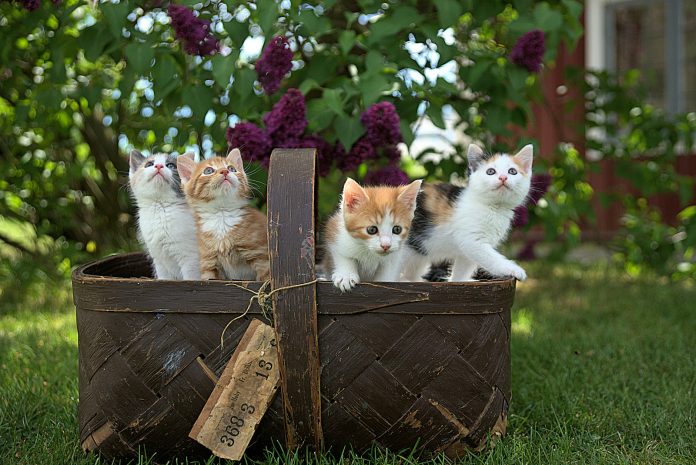Introduction
Salty licorice cats are a type of candy that combines the intense flavor of black licorice with the sharp, salty taste of ammonium chloride. This combination creates a polarizing flavor profile that is adored by many but can be off-putting to those unfamiliar with it. The cat shape adds an element of whimsy to these candies, making them visually appealing and easy to recognize. Salty licorice cats are particularly popular in countries like Sweden, Finland, Denmark, and the Netherlands, where salty licorice is a staple treat.
The Origin of Salty Licorice
The origins of salty licorice can be traced back to Northern Europe, particularly in Scandinavian countries, where it has been enjoyed for centuries. The exact timeline of its invention is somewhat unclear, but it is believed that the combination of licorice and salt was first developed in the 18th or 19th century. Ammonium chloride, the key ingredient responsible for the salty flavor, was originally used as a medicine to relieve throat and respiratory ailments. Over time, its use evolved into a flavoring agent for candies, leading to the creation of salty licorice.
Cultural Significance of Salty Licorice Cats
In the Nordic countries, salty licorice is more than just a candy; it is a cultural phenomenon. Salty licorice cats, in particular, are a nostalgic treat for many, evoking memories of simpler times and traditional celebrations.
The Science Behind the Taste: Why Do Some Love It and Others Hate It?
The intense flavor of salty licorice comes from the combination of black licorice and ammonium chloride. Black licorice itself is already a polarizing flavor due to its strong, anise-like taste. When combined with the salty, slightly metallic taste of ammonium chloride, the result is a candy that challenges the palate.
Some people have a higher sensitivity to the bitter flavors in licorice and ammonium chloride, making the taste unpleasant. Others may have grown up with the flavor, developing a preference for it over time.
The Production Process of Salty Licorice Cats
The production of these involves several key steps, each contributing to the final product’s flavor and texture.
Ingredients
The primary ingredients in salty licorice cats include:
- Licorice Root Extract: Provides the characteristic black licorice flavor.
- Ammonium Chloride: Adds the distinctive salty taste.
- Sugar: Balances the bitterness of the licorice and ammonium chloride.
- Glucose Syrup: Adds sweetness and helps create the chewy texture.
- Gelatin or Starch: Used as a thickening agent to give the candy its shape and texture.
Variations of Salty Licorice Cats
While the classic salty licorice cats are made from black licorice and ammonium chloride, there are several variations available to cater to different tastes.
Sugar-Coated Salty Licorice Cats
In some versions, these are coated in a thin layer of sugar, adding a sweet contrast to the salty and bitter flavors. This variation is popular among those who enjoy the salty licorice taste but prefer a slightly milder version.
Chocolate-Covered Salty Licorice Cats
Another popular variation is the chocolate-covered salty licorice cat. The combination of sweet chocolate and salty licorice creates a complex flavor profile that appeals to those who enjoy sweet and salty treats.
Extra-Salty Licorice Cats
For true salty licorice aficionados, extra-salty versions of the candy are available. These candies contain a higher concentration of ammonium chloride, resulting in a more intense salty flavor.
Salty Licorice Cats in Pop Culture
Salty licorice cats, like other forms of salty licorice, have made appearances in pop culture, particularly in the Nordic region.
In addition to literature and film, salty licorice cats have also become a popular souvenir for tourists visiting the Nordic countries. Visitors often purchase these candies to bring home as a taste of Scandinavian culture, and they have become a staple item in Nordic-themed gift shops.
Health Considerations of Salty Licorice Cats
While these are a beloved treat, it is important to consume them in moderation due to certain health considerations.
Ammonium Chloride
Ammonium chloride, the ingredient responsible for the salty taste, can be harmful in large quantities. Consuming too much ammonium chloride can lead to an imbalance in the body’s electrolytes, potentially causing issues such as high blood pressure or kidney problems. For most people, occasional consumption of salty licorice is safe, but it is advisable to limit intake, especially for those with pre-existing health conditions.
Glycyrrhizin in Licorice Root
Another health concern is glycyrrhizin, a compound found in licorice root. Glycyrrhizin can cause a reduction in potassium levels and an increase in sodium levels in the body, leading to high blood pressure and other cardiovascular issues. Like ammonium chloride, glycyrrhizin is safe in small amounts, but excessive consumption can pose risks.
Recommendations for Consumption
Given these potential health risks, it is recommended to enjoy these in moderation. For individuals with high blood pressure, kidney problems, or heart conditions, it may be wise to consult with a healthcare professional before consuming large quantities of salty licorice.
The Globalization of Salty Licorice Cats
While salty licorice has traditionally been a Nordic delicacy, it has begun to gain popularity in other parts of the world, particularly among adventurous eaters and those with an interest in international candies. The globalization of food has made it easier for people outside of Scandinavia to access salty licorice, and specialty candy stores in countries like the United States and the United Kingdom now often carry these.
This growing interest in salty licorice has also led to the creation of new products and flavors, as candy manufacturers experiment with combining the salty licorice taste with other ingredients to appeal to a broader audience. Some companies have even begun marketing salty licorice as a gourmet treat, highlighting its unique flavor and cultural significance.
How to Enjoy Salty Licorice Cats
For those new to salty licorice, the taste can be a bit of a shock at first. Here are some tips on how to enjoy salty licorice cats:
- Start with Mild Versions: If you are trying salty licorice for the first time, start with a milder version, such as sugar-coated or chocolate-covered salty licorice cats.
- Pair with Other Foods: Salty licorice can be an acquired taste, but pairing it with other foods can make the experience more enjoyable. For example, salty licorice pairs well with dark chocolate or strong cheese.
- Share with Friends: Salty licorice is a polarizing flavor, so sharing it with friends can be a fun way to experience the candy. You might find that some people love it, while others can’t stand it, leading to lively discussions and shared experiences.
- Experiment with Different Brands: Different brands of salty licorice cats have different flavor profiles, so if you don’t like one brand, try another. You might find that you prefer a specific type or level of saltiness.
Salty Licorice Cats: A Symbol of Scandinavian Identity
These are more than just a candy; they are a symbol of Scandinavian identity. In a region known for its strong cultural traditions and unique culinary preferences, salty licorice stands out as a distinctly Nordic treat. The cat shape adds an element of fun and nostalgia, making these candies a beloved part of Scandinavian culture.
For many people in the Nordic countries, these are a reminder of home and heritage. In a way, these candies represent the shared cultural experiences that bind people together, making them an important part of the Scandinavian identity.
The Future of Salty Licorice Cats
As the world becomes more connected and international flavors continue to cross borders, the future of salty licorice cats looks bright. While they will always hold a special place in Nordic culture, these candies are likely to gain more fans around the world as people discover and appreciate their unique taste.
Candy manufacturers are also likely to continue innovating with new flavors and variations, ensuring that salty licorice remains a dynamic and evolving part of the confectionery world. Whether enjoyed as a nostalgic treat or a bold new taste experience, These are sure to continue delighting those with a taste for the unconventional.
Conclusion
Salty licorice cats are a unique and iconic candy that captures the essence of Nordic culture. With their distinctive flavor, whimsical shape, and deep cultural significance, these candies have earned a special place in the hearts of many. Whether you are a lifelong fan or a curious newcomer, It offer a taste experience unlike any other.



